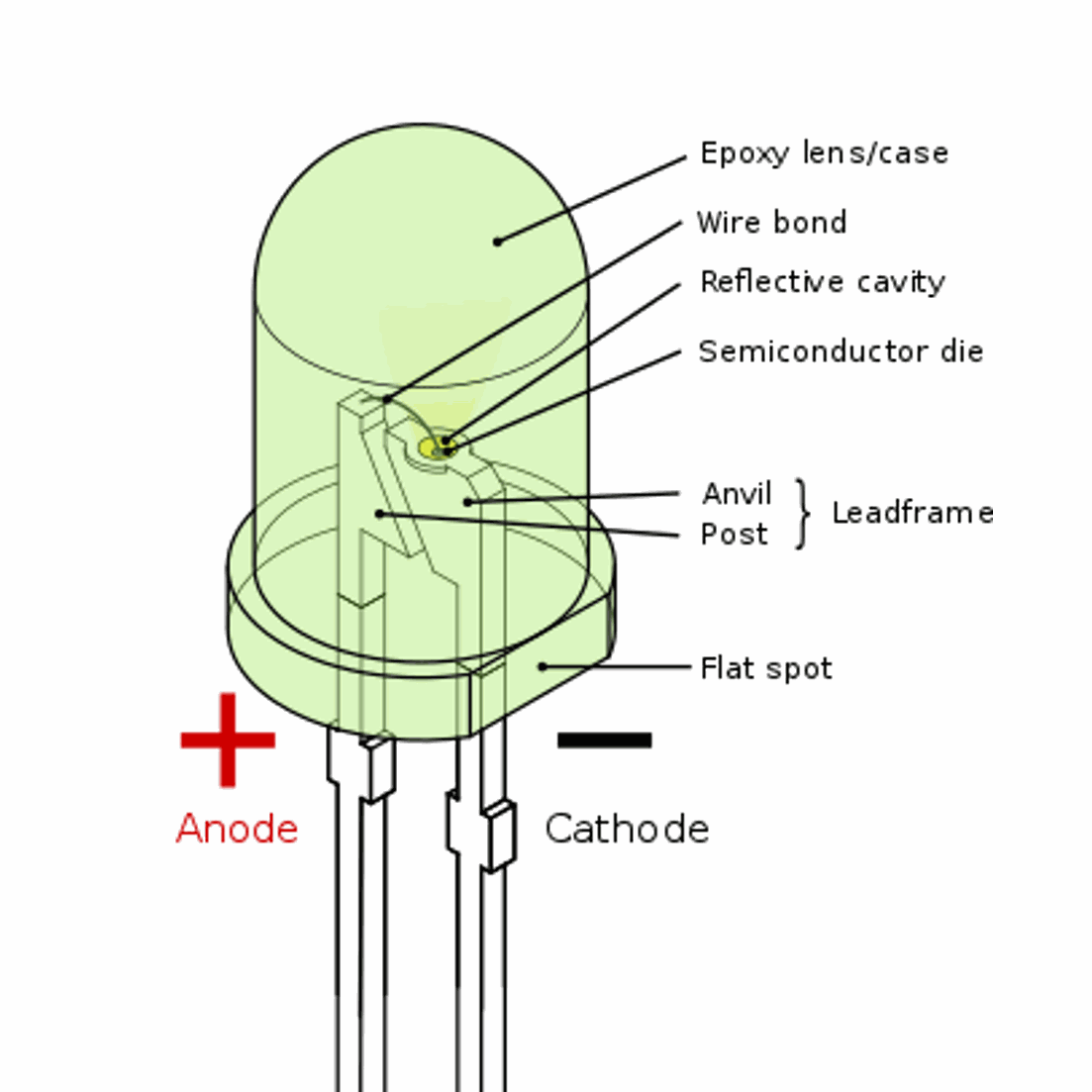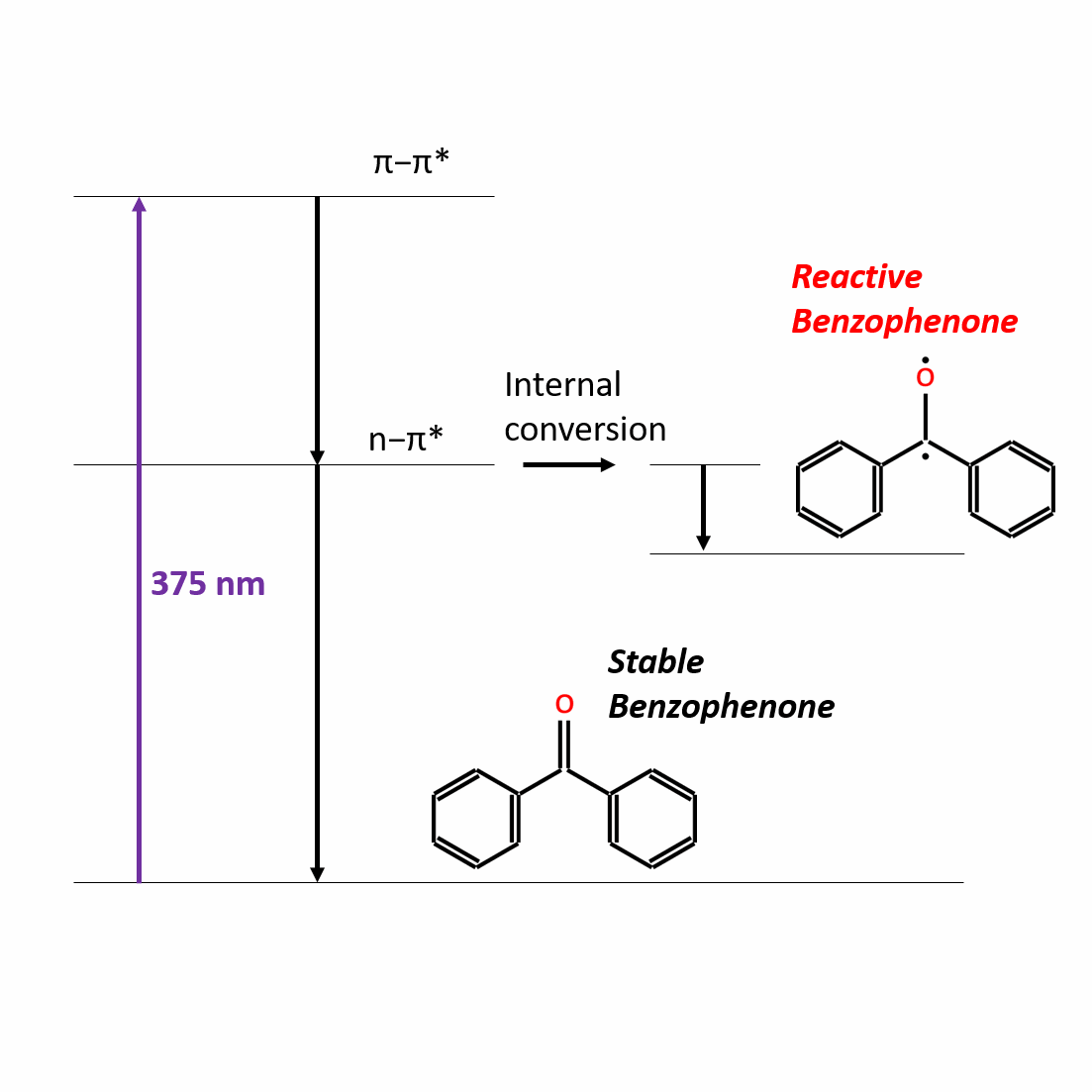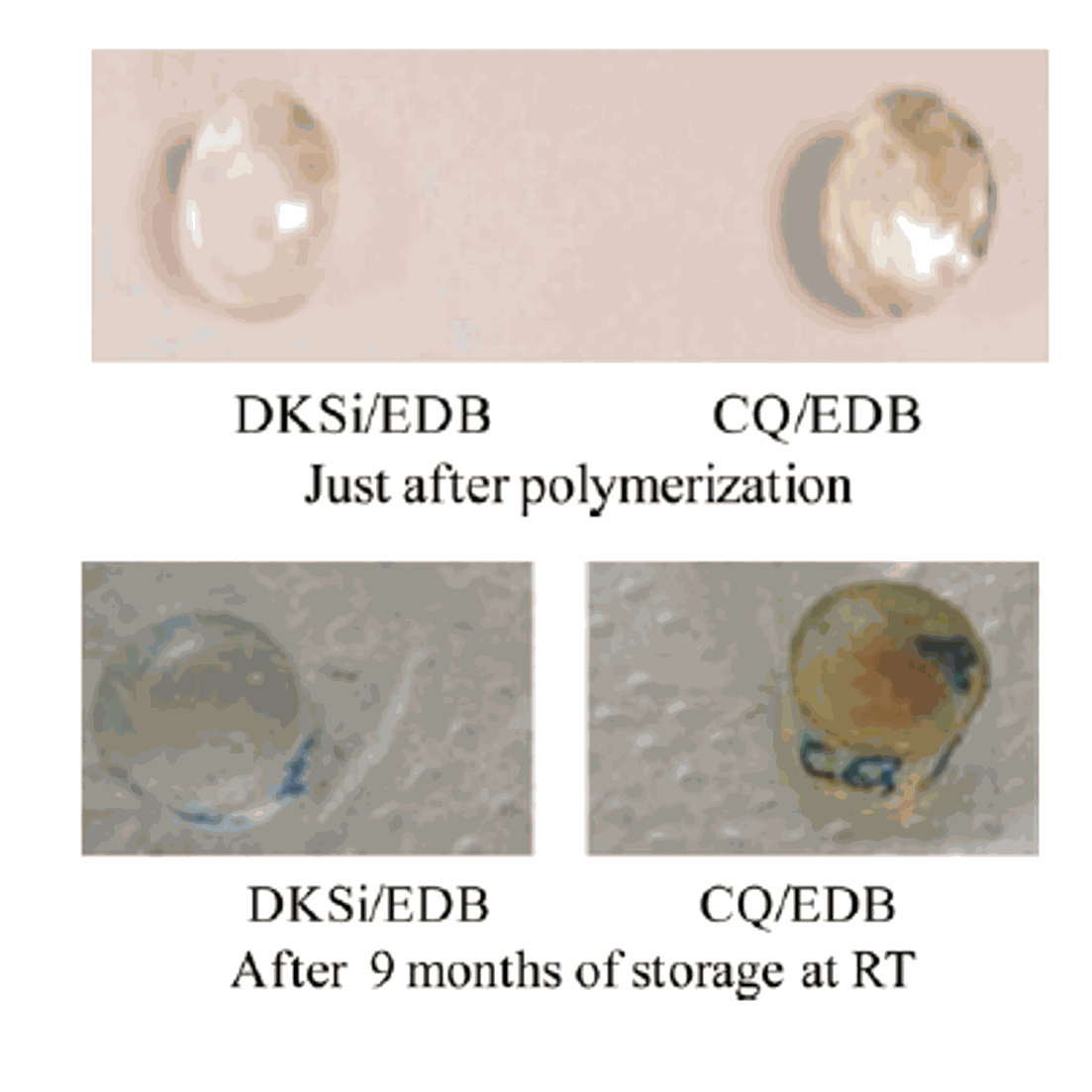Typically, photo-initiators are molecules which, upon UV irradiation, can trigger chemical reactions. Yet, this new class of photo-initiators can be activated by blue light instead . This makes them well suited for LED illumination.
Authors: Mariem Bouzrati-Zerell , Julie Kirschner, Christoph P. Fik , Maximilian Maier , Celine Dietlin , Fabrice Morlet-Savary , Jean Pierre Fouassier , Jean-Michel Becht , Joachim E. Klee and Jacques Lalevée.

Schematic of the photo-activation of the Sylil glyoxilate "DKSi" photo-initiator under Blue Light Excitation (c) Aurélien Pasturel 2021
Why developing Blue-Light photo-initiators in the first place?
From photo-polymerization down to opto-genetics, triggering reactions with light has become an important part of today's research and to work perfectly, the light source and the photo-reagents have to go hand in hand:

LED are great light sources
LED have :
-
Low energy consumption
-
Low cost
-
Low maintenance / High life time
-
Low profile / are highly compact
-
Fast response time
-
Control over pulse and intensity
LED are much better than Hg lamps for all those reasons.
(c) Wikipedia

LED work best in blue ...
In this graph you have the emission spectra of several LEDs sold by ThorLab's.
Notice how the LED that are emitting in UV (<375 nm) are much less powerfull than the ones emitting in blue (>375nm).
Simply put, UV led's are more difficult to produce and in turn are less powerfull while also being more expensive.
(c) Polymer Chemistry https://doi.org/10.1039/C5PY00258C

… but common photo-iniators don't.
This Jablonski Perrin diagram shows the typical behaviour of benzophenone upon UV (375nm) irradiation. Like many other photo-initiators it works poorly under blue light.
To cite the authors :
"At higher wavelengths (λ > 365 nm) most of the classical/commercial PIs exhibit a low absorption due to their initial development for Hg lamps. "
How I met with Silyl glyoxilates
My PhD work was centered around photostructuration of hydrogels for 3D cell culture. Near its end, I was tempted to move away from UV illumination and use a new LED-based illumination system. Unfortunately no photo-initiator seemed to do the trick ...
That's when I stumbled upon this publication: Silyl glyoxylates as a New Class of High Performance Photoinitiators: Blue LED Induced Polymerization of Methacrylates in Thin and Thick Films.
Now let me explain what made me think this was different from the other works I had seen.
What makes them stand out ?
You may argue that there are in fact many other visible (blue) light photo-initiators in use today or under development and you are right;
Camphorquinone is the historical blue light photo-initiator and is commonly used in dental applications. In the litterature, there are extensive reviews listing original, LEd-optimized photo-initiators.
Nonetheless, I think Silyl glyoxylates have distinct features that make them appealing:

They promote fast kinetics
Photoinitiators are best when they react swiftly. For example when one want to cure a resin in dental applications , the shorter it takes the less disturbing it is for the patient.
When it comes to curing a resin , Silyl glyoxilates reacts faster and create more crosslinks than Camphor Quinone.
(c) Macromolecules
https://doi.org/10.1021/acs.macromol.7b01370

They have a simple structure
This shows the chemical structure of various LED-optimized photo-initiators including DKSi.
As you can see the glyoxilates have a much simpler structure which oftens translates into : cost efficient synthesis.
(c) Polymer Chemistry: https://doi.org/10.1039/C5PY00258C

They do not leave coloured byproducts
Last but not least, it is often important that the photo-initiator preserves the material optical properties mainly transparency. In those pictures you can see how resins polymerized with camphorquine progressively turn yellow after a few months whereas those polymerized with DkSI kept their transparency.
(c) Macromolecules https://doi.org/10.1021/acs.macromol.7b01370
Closing: Bridging a wavelength gap
As LED illumination becomes more and more popular it seems natural that new classes of photoinitiators emerge to make use of these technological advances.
If you liked this short introduction you may also have a look at other papers from the same group describing other promising photo-initiators:
Design of Photoinitiating Systems Based on the Chalcone-Anthracene Scaffold for LED Cationic Photopolymerization and Application in 3D Printing
Radical photoinitiation with LEDs and applications in the 3D printing of composites
Photopolymerization and 3D/4D Applications Using Newly Developed Dyes: Search Around the Natural Chalcone Scaffold in Photoinitiating Systems
MORE LIFE SCIENCE TOOLS TO FOLLOW
You want the latest on life science tools to follow, test and more?
